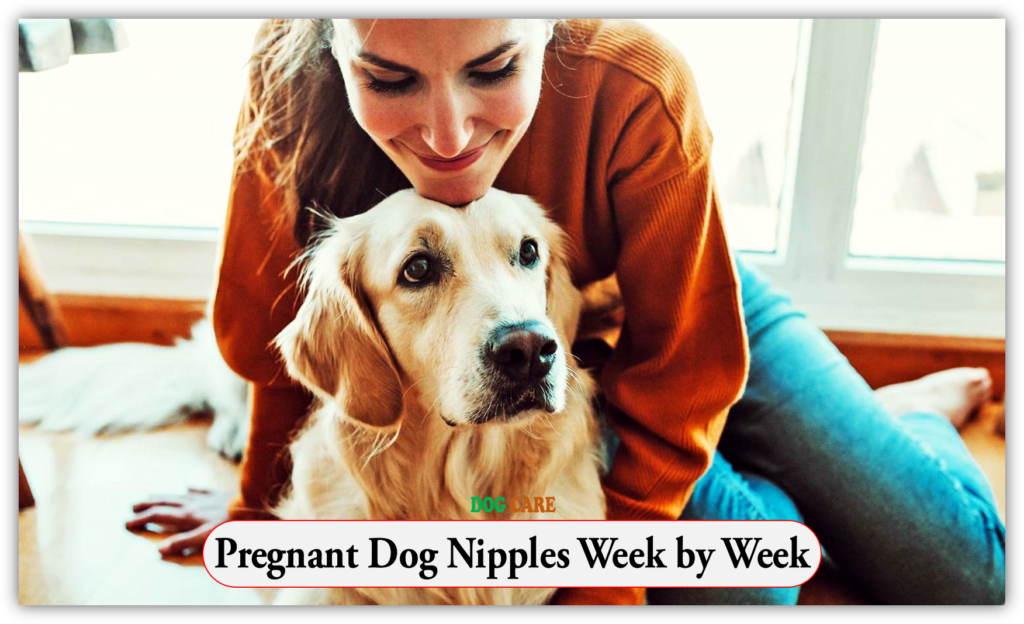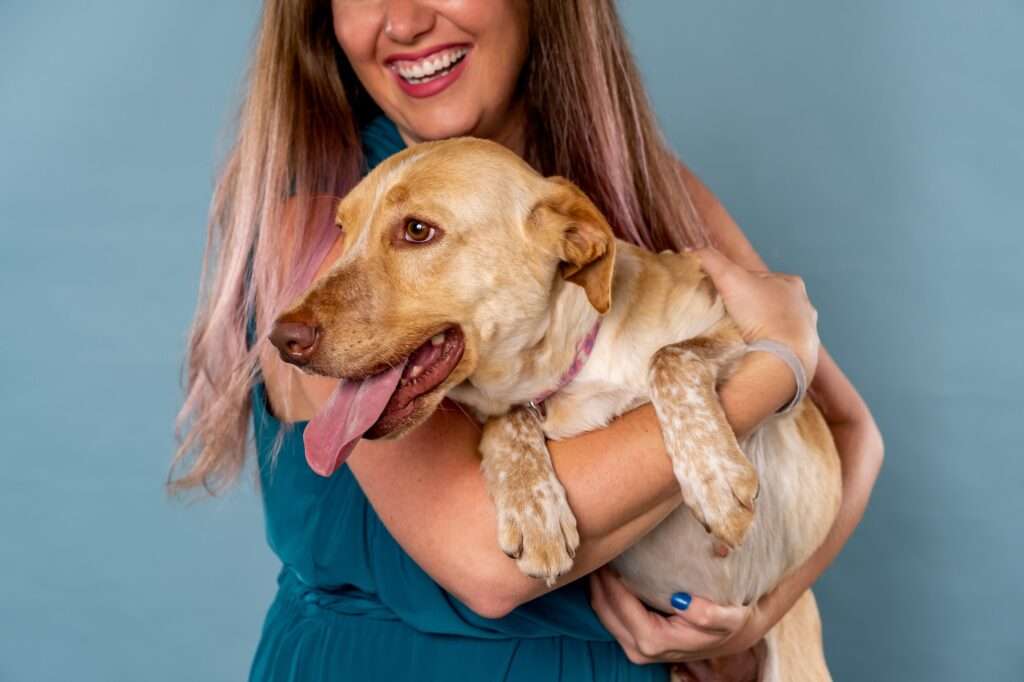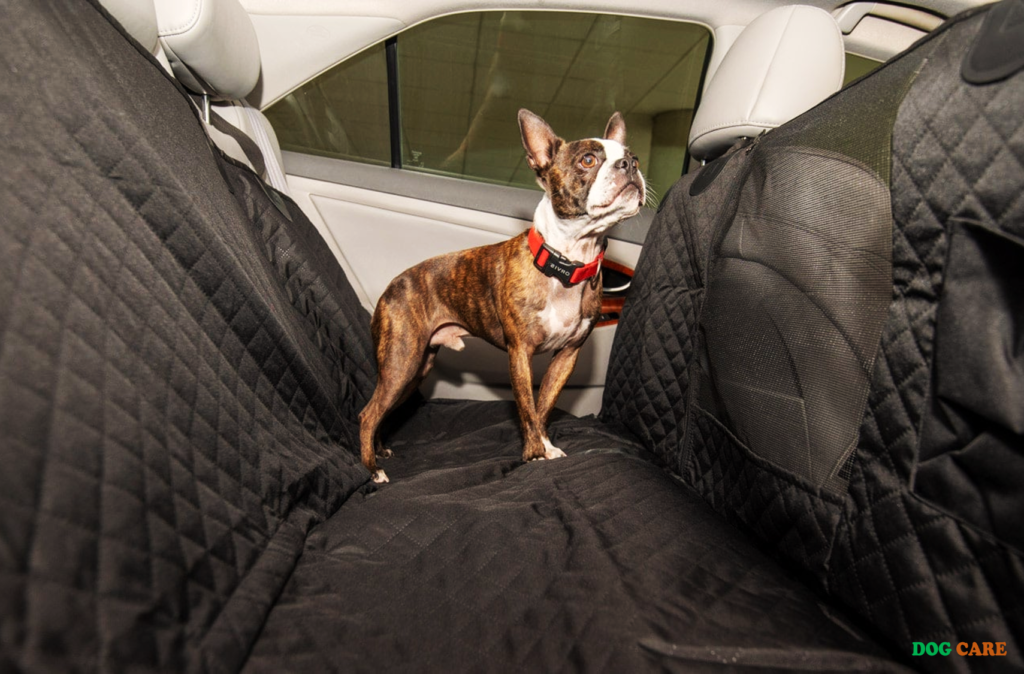Pregnant Dog Nipples Week by Week, and understanding these changes can help monitor the pregnancy. During pregnancy, a dog’s nipples undergo various transformations as the body prepares for nursing.
This article provides helpful information on the progression of pregnant dog nipples week by week, offering insights for pet owners or breeders to ensure their dog’s health and well-being. The nipple development process is crucial as it indicates the dog’s stage of pregnancy and can help predict the arrival of puppies.
By closely observing and caring for the dog’s nipples, owners can efficiently track the progress of the pregnancy and be prepared for the upcoming birth. This comprehensive guide aims to empower dog owners with knowledge about pregnant dog nipples and their changes throughout the pregnancy journey.

Introduction To The Journey
Welcome to the fascinating journey of a dog’s pregnancy! If you are a dog owner, breeder, or simply an enthusiast, understanding the changes that happen week by week during a dog’s pregnancy can enable you to provide the best care for your furry friend. One significant aspect of a dog’s pregnancy is the development and changes in her nipples. In this blog post, we will guide you through the journey of a dog’s pregnancy and the changes you can expect to see in her nipples as the weeks progress.
Understanding The Reproductive Cycle Of A Pregnant Dog
Before we delve into the details of monitoring a dog’s nipples, it is essential to understand the reproductive cycle of a pregnant dog. A typical canine pregnancy lasts around 63 days, divided into three distinct stages:
- Proestrus: This initial stage lasts for about 9 days and is characterized by the dog’s vulva swelling and the release of bloody vaginal discharge.
- Estrus: Following proestrus, the dog enters estrus, commonly known as the heat cycle. This stage lasts for about 9 days and is marked by the dog becoming receptive to male dogs for mating.
- Diestrus: After mating, the diestrus stage begins and lasts for approximately 55 days. This is the gestation period during which the fertilized eggs develop into puppies.
Understanding these stages is crucial as it allows you to track the progress of your dog’s pregnancy and enables you to identify any abnormalities or complications that may arise.
Importance Of Monitoring The Dog’s Nipples During Pregnancy
To ensure the health and wellbeing of your pregnant dog and her developing puppies, it is essential to monitor her nipples regularly. The nipples undergo various changes during the different stages of pregnancy, which can provide valuable insights into the progress and health of the pregnancy.
Some key reasons why monitoring the dog’s nipples is crucial during pregnancy include:
- Detecting pregnancy: Changes in the nipples, such as increased size, darkening of color, and prominence, can be one of the first signs of pregnancy. Monitoring these changes can help confirm if your dog is pregnant or not.
- Assessing pregnancy progress: As the pregnancy progresses, the nipples continue to change. They typically become firmer, larger, and may even start producing milk. Regular monitoring of these changes allows you to track the progress and ensure that everything is proceeding as expected.
- Identifying complications: Nipple abnormalities, such as excessive redness, swelling, discharge, or the presence of masses, can indicate potential complications or infections. By observing any changes and promptly seeking veterinary care, you can address these issues before they become serious.
By understanding the importance of monitoring the dog’s nipples and being aware of the changes that occur week by week, you can provide the best care for your pregnant dog and her developing puppies.
Week 1-2: Early Stages
Pregnancy is an exciting time for both humans and dogs alike, as a new life begins to form. During the first and second week of pregnancy in dogs, there are subtle changes happening within the mother’s body. From the very beginning, observing the changes in the dog’s nipples can provide clues to confirm her pregnancy. Let’s explore the signs of pregnancy and the nipple changes that occur during these early stages.
Signs Of Pregnancy In Dogs
Dogs exhibit various signs of pregnancy, which can help determine if they are expecting. While some of these signs may not be apparent during the first and second week, it’s essential to keep an eye out for the following signs as the pregnancy progresses:
- Changes in appetite and food preferences
- Increased water intake
- Behavioral changes, such as mood swings or nesting behaviors
- Weight gain, especially around the abdomen
- Enlarged mammary glands or breasts
- Nausea and vomiting (morning sickness)
It’s important to note that these signs may vary from dog to dog, and not all pregnant dogs will experience them in the same way.
Nipple Changes During The First And Second Week
One of the early signs of pregnancy in dogs is noticeable changes in their nipples. During the first and second week of pregnancy, you may observe the following nipple changes:
- Swelling: The nipples may become slightly swollen and more prominent than usual.
- Pink Coloration: The nipples may take on a pinkish hue due to increased blood flow to the area.
- Enlargement: As the pregnancy progresses, the nipples may enlarge further.
- Darkening: The color of the nipples may darken, turning into a deeper shade of pink or even brown.
These changes in the nipples are a result of hormonal fluctuations in the dog’s body as it prepares for pregnancy and mammary gland development. Monitoring these changes can help confirm whether your dog is indeed pregnant.
If you notice any of these signs, it’s crucial to consult with a veterinarian for proper confirmation and prenatal care. During the next stages of pregnancy, the nipple changes become more pronounced as your dog’s body prepares for the arrival of her puppies.
Week 3-4: Preparing For Motherhood
During weeks 3-4 of pregnancy, a dog’s nipples become more prominent as they prepare for motherhood. Observing the changes week by week helps monitor the progress and ensure a healthy pregnancy.
Congratulations, your pregnant dog has successfully entered her third to fourth week of pregnancy, and now it’s time to start preparing for motherhood. During this crucial stage, you will notice some significant changes in your dog’s nipples and milk production. Understanding these changes is important to ensure a smooth and healthy pregnancy journey for your furry friend.
Increased Nipple Size And Pigmentation
One of the notable changes you will observe during weeks 3 to 4 of your dog’s pregnancy is the increased size and pigmentation of her nipples. This is an exciting indication that her body is preparing for the arrival of adorable little puppies. The nipples may become larger, more prominent, and even darken in color. These changes occur as your dog’s body starts to lay the groundwork for nurturing her offspring.
It’s crucial to keep an eye on the nipple size and pigmentation, as it gives you insight into the progress of your dog’s pregnancy. If you notice sudden changes or abnormalities in this area, it’s essential to consult your veterinarian for a professional opinion.
Nipple Development And Milk Production
Another vital aspect of preparing for motherhood during weeks 3 to 4 of your dog’s pregnancy is the development of her nipples and the initiation of milk production. As her body gears up to nourish the growing puppies, her mammary glands begin to multiply and expand.
You may notice that your dog’s nipples become firmer and more sensitive during this period. Gently palpating the mammary glands can help you assess the level of development. Be cautious and ensure you handle your dog gently, as she may be more sensitive than usual due to hormonal changes.
The increased nipple size and sensitivity are also accompanied by the onset of milk production. Small droplets of milk may be expressed from the nipples, which is an encouraging sign that everything is progressing as it should. This milk, known as colostrum, is essential for the puppies’ immune system and provides vital nutrients.
As your dog prepares for motherhood, it’s essential to provide a clean and comfortable environment for her. Ensure she has a quiet and warm space where she feels safe and secure to give birth and care for her puppies. Make sure she has access to fresh water and provide her with a balanced and nutritious diet recommended by your veterinarian.
By understanding the changes in your dog’s nipples and the initiation of milk production during weeks 3 to 4 of her pregnancy, you can actively participate in her journey towards motherhood. Monitor these developments closely and consult your veterinarian for any concerns or questions you may have. Your support and care will contribute to a healthy and successful pregnancy for your beloved furry companion.
Week 5-6: Rapid Growth
During weeks 5-6 of your pregnant dog’s journey, you can expect to witness significant changes in her body as her puppies continue to develop rapidly. This stage is marked by crucial milestones, such as the enlargement of her nipples and the onset of lactation. As an attentive pet owner, it’s important to monitor for any abnormalities or signs of discomfort, ensuring the well-being of both your furry friend and her unborn puppies.
Nipple Enlargement
One of the noticeable changes you will observe during these weeks is the rapid growth and enlargement of your pregnant dog’s nipples. This is a normal physiological response to the hormonal changes occurring in her body. The hormones released during pregnancy stimulate the mammary glands, causing them to increase in size in preparation for nursing the puppies after birth.
This enlargement allows for increased milk production to meet the demands of the developing puppies. As your dog’s nipples become more prominent, you may also notice a darkening of the skin surrounding them. This is known as ‘pigmentation’ and is another common occurrence during pregnancy.
Signs Of Lactation
Alongside nipple enlargement, the development of the mammary glands triggers the onset of lactation. Your dog’s body will start producing milk to nourish the growing puppies. During weeks 5-6, you might notice a sticky or milky fluid being discharged from your dog’s nipples. This is called ‘colostrum,’ a vital substance that provides essential nutrients and antibodies to kick-start the puppies’ immune systems.
It’s important to note that colostrum production is a normal part of pregnancy; therefore, its presence should not be a cause for concern. However, it’s crucial to ensure that your dog doesn’t excessively lick or clean her nipples, as this behavior can stimulate milk production further and potentially make her uncomfortable. Encouraging your dog to avoid excessive licking can help prevent potential soreness or infections.
Monitoring For Any Abnormalities Or Discomfort
As your dog’s body undergoes these changes, it’s essential to remain vigilant for any signs of abnormalities or signs of discomfort. While nipple enlargement and signs of lactation are expected during weeks 5-6 of pregnancy, it’s important to distinguish between normal changes and potential issues that require attention.
To ensure your dog’s well-being, monitor for any signs of redness, swelling, heat, or tenderness around the mammary glands. Excessive discharge, accompanied by a foul odor or changes in color, should also be noted. Additionally, observe your dog’s behavior for signs of discomfort, such as excessive scratching or licking of her nipples.
If you notice any of these abnormalities or if your dog appears to be in pain, it’s crucial to consult your veterinarian for a thorough examination. They can provide expert guidance and determine whether any intervention or treatment is needed to ensure the health and comfort of your pregnant dog.
Week 7-8: Preparing For Birth
In weeks 7-8 of your dog’s pregnancy, you will start noticing some significant changes as your expectant pup gets closer to giving birth. During this time, it is crucial to take the necessary steps to ensure a smooth and stress-free delivery.
Nipple Sensitivity And Nesting Behavior
One of the noticeable changes during this phase is an increase in nipple sensitivity. As your dog’s body prepares for nursing her puppies, her nipples may become tender or swollen. It’s important to be gentle when handling her abdomen to avoid discomfort.
At the same time, you may observe nesting behavior in your pregnant dog. This instinctual behavior involves her seeking out a comfortable and safe spot to give birth and care for her newborns. You may notice her rearranging bedding, gathering soft materials, and even digging at the chosen area.
Preparing A Whelping Area For The Pregnant Dog
To ensure a smooth and stress-free birthing process, it is essential to create a comfortable and secure environment for your pregnant dog. Here are some steps to prepare a whelping area:
- Choose a quiet and secluded location, away from noise and distractions.
- Provide a comfortable bedding for your dog to rest on during and after the birth.
- Ensure the area is warm, as newborn puppies are unable to regulate their body temperature initially. Use heating pads or heat lamps, making sure they are set to a safe temperature.
- Set up a whelping box that provides a confined space for the mother and her puppies. This will help keep the puppies safe and prevent them from wandering away.
- Keep the area clean and hygienic, as maintaining proper hygiene is essential for the health of both the mother and the puppies.
Remember, each dog may have unique preferences and needs, so it’s important to observe your dog’s behavior and adjust the whelping area accordingly. By providing a comfortable and safe space, you can help your pregnant dog feel secure in welcoming her precious little ones into the world.
Week 9: Labor And Delivery
During Week 9 of your pregnant dog’s journey, you may notice changes in her nipples. These changes occur gradually week by week as her body prepares for labor and delivery. Stay observant and provide necessary care to support her during this crucial stage.
Nipple Changes As A Sign Of Impending Labor
During week 9 of your dog’s pregnancy, labor and delivery are just around the corner. As you eagerly await the arrival of those adorable bundles of joy, it’s important to keep an eye on your pregnant dog’s nipple changes. These changes can serve as an indicator that labor is imminent, allowing you to be prepared and ensure a smooth birthing process.
One of the first signs you may notice is an increase in the size and prominence of your dog’s nipples. They may become more engorged and protrude slightly, signaling that your dog’s body is preparing for milk production. This process, known as “bagging up,” is a telltale sign that labor is approaching.
Another nipple change to watch for is a change in color. As your dog gets closer to labor, her nipples may darken or develop a pinkish hue. This is due to increased blood flow to the area and is a natural part of the pregnancy process.
It’s important to note that every dog is unique, and the timing and appearance of nipple changes can vary. Some dogs may experience these changes earlier or later in the pregnancy, so it’s essential to closely monitor your dog’s individual progress.
Assisting The Dog During Labor And Birth
When your dog goes into labor, you play a vital role in ensuring a safe and comfortable birthing experience. As a responsible pet owner, it’s crucial to be prepared and knowledgeable about the process of assisting your dog during labor and birth.
First and foremost, create a quiet and calm environment for your dog. Set up a warm and cozy whelping box in a secluded area of your home, and make sure it’s easily accessible for your dog. Provide plenty of soft bedding and ensure the area is clean and sterile.
Monitoring your dog’s progress during labor is essential. Keep a close eye on her behavior and notify your veterinarian if there are any signs of distress or prolonged periods without progress. Remember, every dog’s labor is unique, and it’s important to stay calm and patient throughout the process.
When the puppies start to arrive, be prepared to lend a helping hand if necessary. Observe the delivery carefully, ensuring that each puppy is breathing and has successfully detached from the placenta. Use clean towels or tissues to gently stimulate the puppy’s breathing if needed.
As the labor progresses, make sure each puppy has a chance to nurse and receive colostrum, a nutrient-rich milk essential for their immune system development. If you notice any difficulties with nursing or if a puppy seems weak, promptly seek assistance from your veterinarian.
Remember, the health and well-being of the mother dog and her puppies are your top priorities during the labor and birth process. By being observant, prepared, and knowledgeable, you can help ensure a successful delivery and the best start in life for those adorable bundles of joy.
Postpartum Period: The Fourth Trimester
During the postpartum period, pregnant dog nipples go through changes week by week. These transformations are a natural part of the fourth trimester and play an important role in lactation and nursing.
Nipple Changes After Giving Birth
During the postpartum period, also referred to as the fourth trimester, a pregnant dog’s body undergoes multiple changes to support her puppies’ growth and development. One significant change that occurs is in the nipples. Understanding and monitoring these changes can help ensure the health and well-being of both the nursing mother and her pups. After giving birth, a pregnant dog’s nipples may experience some noticeable transformations.
These changes are a result of hormonal fluctuations and the physical demands of nursing newborn puppies. Here are some common nipple changes you can expect to observe during this period:
1. Swelling and Enlargement: The nipples become swollen and larger than normal as they prepare to produce milk for the hungry litter. This swelling is completely normal and usually subsides after the puppies have weaned.
2. Darkening of Color: The color of the nipples may darken significantly, with some becoming almost black. This is caused by increased blood flow to the area and is a natural part of the body’s preparation for lactation.
3. Increased Sensitivity: The nipples may become more sensitive and tender. This sensitivity is due to hormonal changes and the increased demands placed on the nursing mother’s body. It’s important to handle the mother dog’s nipples with care to avoid causing discomfort or pain.
Caring For The Nursing Mother And Her Puppies
Proper care during the postpartum period is crucial to ensure the health and well-being of the nursing mother and her puppies. Here are some essential guidelines to follow:
1. Provide a Clean and Comfortable Environment: Set up a cozy whelping area for the mother dog and her puppies. This area should be warm, private, and free from drafts. Regularly clean and sanitize the whelping box to maintain a hygienic environment.
2. Monitor for Infections: Keep a close eye on the mother dog’s nipples for any signs of infection, such as redness, swelling, discharge, or a foul odor. If you notice any of these symptoms, seek veterinary advice immediately, as an untreated infection can jeopardize the health of both the nursing mother and her puppies.
3. Ensure a Nutritious Diet: A lactating dog requires a nutritionally balanced diet to support milk production and meet the increased demands on her body. Consult your veterinarian for recommendations on an appropriate diet and feeding schedule for the nursing mother.
4. Encourage Regular Nursing: Puppies need to nurse frequently to receive adequate nutrition and to stimulate milk production. Ensure that all the puppies are nursing and monitor their weight gain to ensure their growth is on track.
5. Provide Veterinary Care: Schedule regular check-ups with a veterinarian to ensure the nursing mother and her puppies are healthy and receive any necessary vaccinations or treatments. The veterinarian can also provide guidance on issues specific to your dog’s breed and individual circumstances.
By being aware of the changes in a pregnant dog’s nipples after giving birth and following proper care guidelines, you can help ensure a smooth postpartum period for both the mother dog and her puppies. Paying attention to these details will allow you to provide the best possible care and support during this critical stage of their lives.

Frequently Asked Questions Of Pregnant Dog Nipples Week By Week
Why Do Pregnant Dogs’ Nipples Get Bigger?
During pregnancy, hormonal changes cause an increase in blood flow to the mammary glands, resulting in enlarged nipples.
When Do Pregnant Dog Nipples Start To Darken?
Pregnant dog nipples usually begin to darken around the third or fourth week of pregnancy.
Is It Normal For Pregnant Dog Nipples To Leak?
Yes, it is normal for pregnant dog nipples to leak a clear or milky fluid called colostrum as they prepare for nursing.
How Many Weeks Do Pregnant Dog Nipples Stay Swollen?
Pregnant dog nipples can remain swollen throughout the entire pregnancy, usually until a few weeks after giving birth.
Are Sore Nipples A Sign Of Pregnancy In Dogs?
Yes, dogs may experience sore nipples as a sign of pregnancy due to hormonal changes and increased blood flow.
Can You Express Milk From Pregnant Dog Nipples?
It is not recommended to manually express milk from pregnant dog nipples as it can potentially introduce bacteria and cause infection.
What If A Pregnant Dog’s Nipples Don’t Get Bigger?
If a pregnant dog’s nipples don’t get bigger, it is advisable to consult a veterinarian to ensure the health of the pregnancy.
How Can I Help Relieve Discomfort From Swollen Dog Nipples During Pregnancy?
Providing a comfortable nesting area and avoiding excessive handling can help relieve discomfort from swollen dog nipples during pregnancy.
What Should I Do If My Pregnant Dog’s Nipples Become Red Or Swollen?
If your pregnant dog’s nipples become red or swollen, it is important to seek veterinary advice as it may indicate an infection or mastitis.
When Do Pregnant Dog Nipples Return To Normal After Giving Birth?
After giving birth and weaning the puppies, the dog’s nipples gradually return to their normal size over several weeks.
Conclusion
Understanding the changes in a pregnant dog’s nipples week by week is vital for the well-being of both the mother and her puppies. By recognizing and monitoring these changes, you can ensure a healthier pregnancy and make informed decisions regarding the upcoming birth.
Keep a close eye on any abnormal or worrisome developments, and consult with a veterinarian for guidance throughout this exciting journey.


